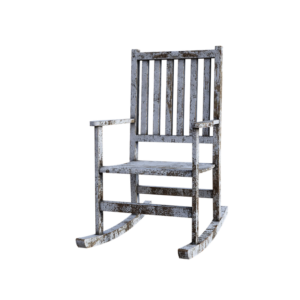By Tom McGowan
We didn’t do dogs growing up, at least, not in my family, with six kids and two adults in a two-bedroom apartment. Dogs entered my life in my 20s when I met my wife-to-be Malinda. She had the dog of a lifetime named Brutus. It soon became clear that being in a relationship with Malinda meant “Love me, love my dog,” and I did. But he passed away some years after we moved to Atlanta. After some months of grieving, we decided to adopt an older dog and skip the house-training ordeal. We eventually settled on Lark, a dog about 2 years old, owned by a social worker. This gentleman’s reasons for giving up his dog were a bit hazy, as I recall. Lark had been kept in the yard on a long chain. We informed the owner we wanted a house dog. A strange look passed over the owner’s face, but he assured us that Lark would do just fine inside.
Lark was beautiful! A deep rich brown, a cross between a chocolate lab and a Weimaraner, with the bobbed tail typical of Weimaraners, but bobbed so short that when he wagged his tail, it produced just a wiggle of his furry nub. He was massive, over 100 pounds, heavily muscled, and with a big chest. “What a gorgeous creature,” remarked our neighbor, whose mother was a dog breeder. He was a wonder to watch as he ran. People took notice when we walked in Grant Park. Sometimes they stopped to ask what kind of dog he was. More often, we would hear them muttering two words, repeated, under their breath as we passed by: “Big dog, big dog!”
Beautiful though he was, we soon discovered that our new family member was no lark. No sooner did we have him home than he snatched Malinda’s lunch from the kitchen table and gobbled it down. Whoosh! We soon changed Lark’s name to Luke. He was no lark, but we did not want to confuse him by changing his name drastically. Shortly thereafter, we had our first post-adoption house visitor. Our friend David came over, and Lark took issue. Apparently, Lark had decided that we two and he were it. Others were not wanted nor invited. Lark sprang up and down, reaching eye level with David, managing while doing this to move around David as David turned to try to avoid him. Yes, David was “surrounded” by 360 degrees of levitating, barking dog. “Down, Luke, Down!!!” became a frequent refrain.
Then there was his destruction of our home. Arriving home from work, we would peer uneasily through the front door glass (easy to do as Luke would have taken down the curtain) to survey what mischief he had perpetrated in our absence.
He ate his way through a plaster wall. He chewed a hole in a valuable Persian rug. He ate “wolf size” rawhide chew toys in 20 minutes. He consumed tennis balls in a day or two. Yes, he was a champion chewer! With his “Jaws of Death,” he could hold two tennis balls and a paint roller in his mouth all at one time. He loved leaping for sticks: If I held one 7 feet from the ground, he would leap up to grab it from me. One of his favorite games was to clench a stout stick in his jaws, and then have me grab the ends of the stick and lift him off the ground by spinning him around. If the stick broke, he would sail off in the air like a physics experiment on centrifugal force, only to return in seconds for another round of “clench and spin.”
In despair, we faced the fact that Luke was more suited to a junk yard than our home. We evaluated our options. We considered the pound more than once, but we didn’t have the heart to send him off to almost certain death. Perhaps, we thought, his former owner would want him back – he had seemed so fond of the dog. But when we phoned him to explore this possibility, the man exploded in indignation, refusing to consider taking Luke back and blaming us for being uncaring. “I shouldn’t have given the dog to you free of charge!” he ranted. “People don’t appreciate things they don’t have to pay for.” We also learned his reason for giving Luke away when he confessed he simply could not control him.
In the end, Malinda took Luke to obedience training. The trainer was a real drill-instructor type, who had no patience with recalcitrant dogs or weak owners. Imagine Malinda’s mortification when, at the beginning of a training session, with 20 dogs and owners lined up on a concrete parking deck, Luke lifted his leg and peed on her leg. Catching sight of this humiliating event, the instructor boomed, “If any dog did that to me, you’d better believe I’d let him know who was boss.” At the time, Malinda worked with juvenile delinquents and prided herself on being a firm authority figure, so she threw herself into the training session with determination. All for naught: At the end of session, as if to punctuate the training, Luke lifted his leg once more and baptized Malinda’s shoe.
Clearly, Luke did not want to be broken or trained. The following week, when it came time to teach the “down” command, Malinda had to wrestle Luke’s 100-pound frame to the ground, and a referee would have been hard pressed to declare her a winner on points. The instructor finally figured out, when she tried to get Luke to cooperate herself, that Luke was not your average dog, and prescribed a pinch collar. This replaced a chain choke collar that had no effect, given Luke’s muscular neck. I could lift Luke off the ground with the chain choke collar, and he would not even be breathing hard. Likely his time as a yard dog on a chain had toughened him up. The pinch collar dug in when he pulled, and when the first hard pull produced a yelp, we knew we were getting his attention.
Still, it was slow going. For instance, when we were training him to come when called, he would not run back to us, but AT us — directly at us — at top speed. At the last possible moment, he would veer off, brushing our legs as he whipped by. One day, apparently fed up with our attempts to civilize him, he headed straight for Malinda but did not veer off, instead, he cannon-balled into her leg with his lowered head, leaving a bruise that lasted a month.
We despaired of ever getting this dog under control. I will always remember the evening a friend joined us for dinner, and we recounted to them our ordeal with Luke. With the assurance of a fortuneteller, he reassured us, “Just give him another year. This is going to be a mellow dog, I can tell.” We clung to this prediction through many more trials with Luke.
But there is a happy ending. The turning point came when a trainer at Good Dog, Bad Dog gave us an excellent piece of advice. “He’s destroying your things because he gets bored and anxious while you’re away. If you confine him to a manageable space while you’re gone, he’ll get the idea that this is his safe and happy place and that he can tolerate your absence without chewing up everything in sight.” Following this trainer’s suggestion, we fastened a short, steel chain to the baseboard in the hall, and kept Luke on the chain whenever we weren’t around to interact with him. After a year of this, Luke was a different dog, and could be left free to roam the house while we were gone. Extensive training and time turned Luke into a member of the family. Scads of chew toys helped too. (While standard chew toys were quickly dismembered, I invented the use of a high quality 3/8″ nap paint roller, cut in half. These lasted a record month at a time.) It even got to the point that when Luke was tempted to mouth us with his teeth and we reprimanded him, he’d frantically search for a paint roller to satisfy his Labrador oral urges.
And so, Luke became our son Sam’s first dog. With all his rambunctiousness, he was eternally patient with babies and children, and let them camp out on him, tug on his ears, and explore his head with their tiny figures for hours on end. And he became socialized with friends and neighbors. By the end of his 12 years of life, Big Dog Luke had, in fact, become Good Dog, Luke!





Comments are closed.